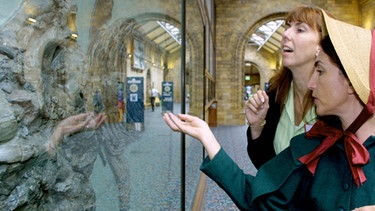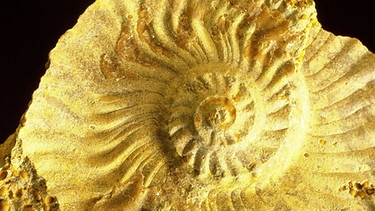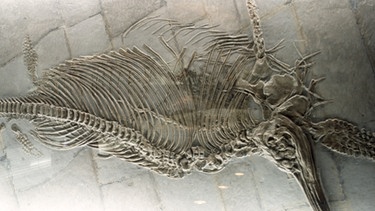GRIPS Englisch 32 Mediation: Mary Anning
Anfang des 19. Jahrhunderts ging auch Mary Anning aus England auf Fossilienjagd. Lies dir durch, wie erfolgreich sie war. Dabei trainierst du den Umgang mit dem simple past und lernst, fremde Texte besser zu verstehen. Im Klicktool warten dann Fragen zum Text auf dich.

Die Mediation
Seit einigen Jahren findest du in Prüfungen den Begriff "Mediation". In solchen Aufgaben geht es darum, den englischen Text sinngemäß auf Deutsch wiederzugeben. Du musst also nicht wortwörtlich übersetzen, aber verstanden haben, worum es im Text geht - und das auch in kurzen Antworten mitteilen können.
So gehst du vor:
- Lies dir den Text zunächst einmal ganz durch. Hast du den Sinn grob verstanden?
- Schau dir den Text ein zweites Mal an und schlage die unbekannten Wörter in einem Wörterbuch nach. Schreib dir die deutschen Bedeutungen in der Prüfung am besten direkt dazu. Bei unseren Online-Übungen kannst du sie auf einem Blatt Papier notieren.
- Jetzt kannst du die erste Frage lesen und die entsprechende Textstelle dazu suchen.
- Beantworte die Frage in kurzen einfachen Sätzen. Denk dran: Du musst nicht wörtlich übersetzen!
Text: Mary Anning - an important female fossil hunter
Aufgabe
- Lies dir die Geschichte über Mary Anning gut durch. Unbekannte Wörter kannst du in einem Wörterbuch nachschlagen.
- Klick dich dann durch die unten stehenden Fragen und versuche, jede stichwortartig auf Deutsch zu beantworten.
- Im zweiten Klicktool kannst du dann kontrollieren, ob deine Antworten richtig waren.
In 1799 a girl was born in an English town on the south coast called Lyme Regis. Her parents Richard and Mary Anning named her Mary. At that moment nobody could foresee (vorhersehen) that their daughter would become the world's first and perhaps most important female fossil hunter.
The Annings had ten children and were very poor. Richard was a carpenter. After work he regularly went to the cliffs at Lyme Regis. He often took Mary and her brother Joseph with him. The area was and still is rich in fossils from the seas of the Jurassic period. About 200 million years ago, this region was at the bottom of a tropical sea.
It was a real tragedy for the Annings when Richard died in 1810. He left his family in great poverty. Without her father, Mary decided to go fossil hunting by herself. A report states that one day she met a tourist who paid half a crown (frühere britische Münze) for a pretty ammonite (Ammonit: Kopffüßer) which she had just found. This first success encouraged her to go on hunting for and selling fossils. In this way she was able to support her family.
But she wasn't always successful. The "market" for fossils was not what it is today. Sometimes she couldn't find any fossils at all. Fossil hunting was also quite dangerous. Mary always had to walk under cliffs at low tide, constantly looking for some fossils. Rocks could fall down at any time. Once, Mary narrowly escaped a landslide that killed her dog.
In 1817 the family got to know Thomas Birch, a rich fossil collector. He sold the fossils which he had bought before from the Annings at an auction and generously gave them the money. He thought the Anning family should be supported because "they found almost all those fine things we love so much".
Mary Anning became famous because she found the world's first ichthyosaur (Ichthyosaurier: Fischsaurier). Some reports say that it was actually her brother Joseph who found it, but it was she who dug it out herself. Mary also found the world's first complete plesiosaur (Plesiosaurier: Meeresreptil) in 1833 and the first pterosaur (Pterosaurier: Flugsaurier) fossil in England as well as a cuttlefish (Tintenfisch).
Mary's life was short and often very hard. It took some time until scientists began to respect her work. In the last period of her life she got an annual (jährlich) payment from the British Association for the Advancement of Science. When she died of breast cancer in 1847, she had become well-known. Charles Dickens's journal "All the Year Round" reported, "the carpenter's daughter has won a name for herself, and deserved to win it". Still today many British children try to say "She sells seashells on the seashore" - a tongue twister remembering Mary Anning from Lyme Regis.


